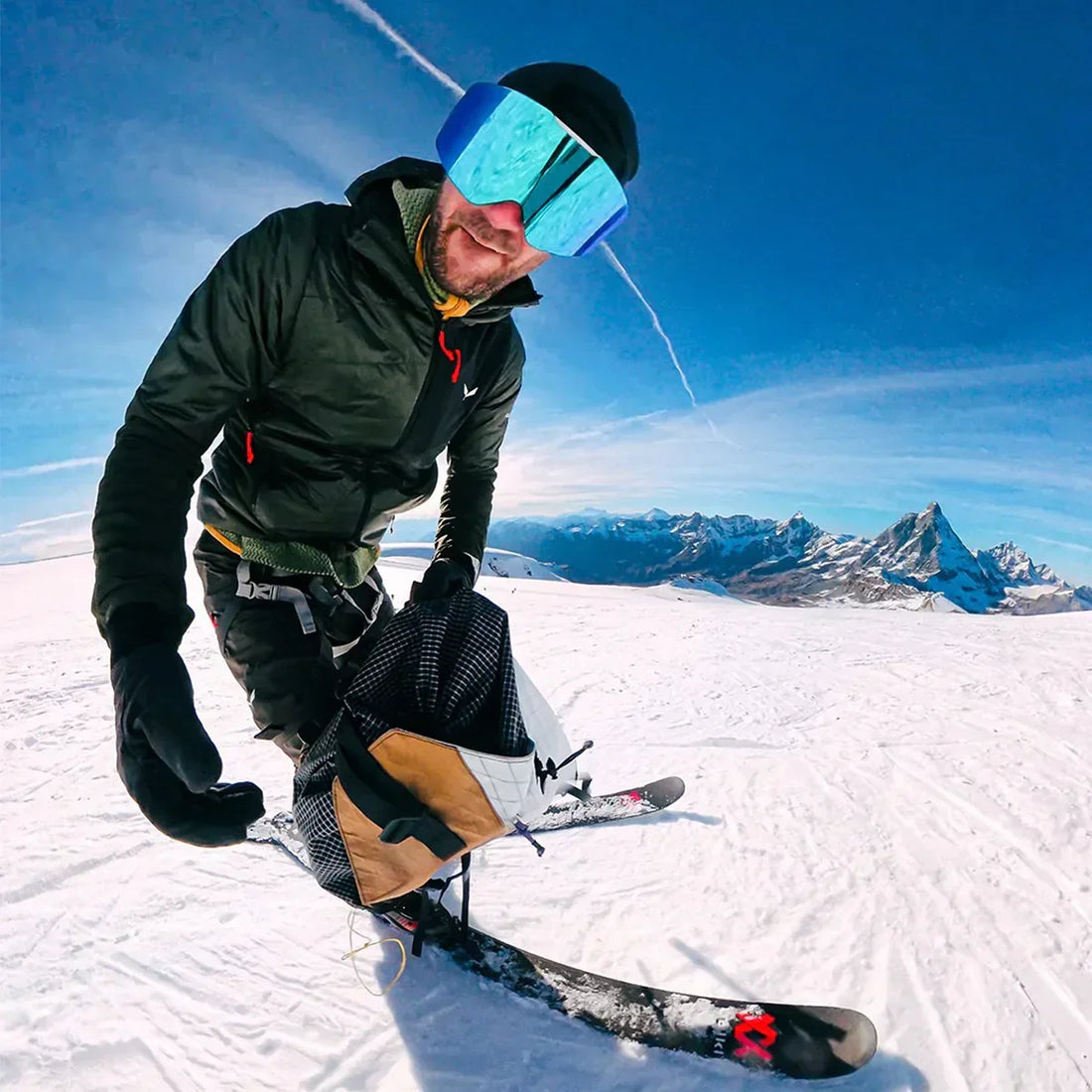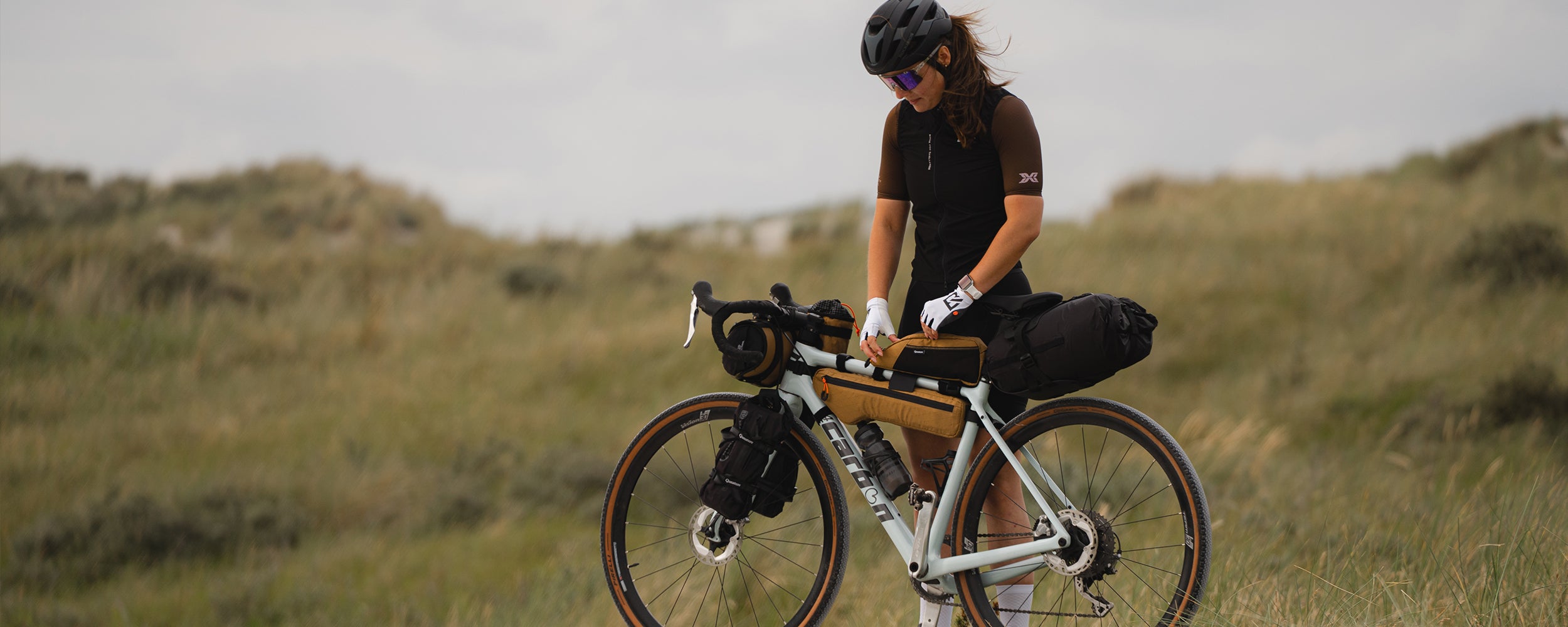How to Choose the Right Ski Body Protection: Safety and Comfort for Every Ride
Protect your body on the slopes with high-quality ski gear. Back, knees, hips, and wrists covered for safety, comfort, and confidence.

Skiing combines freedom, speed, and challenge -- but with that thrill comes real physical risk. A single fall on ice, an unexpected collision, or even fatigue on a long run can lead to injuries. That's why body protection should be at the top of every skier's checklist. From the spine to the knees, hips, and wrists, each part of the body plays a vital role in your control and performance on the slopes. Protecting them doesn't just reduce the risk of injury -- it helps you ski with confidence, focus, and endurance.
In this guide, we'll explore the essentials of ski body protection, explain how each piece of protective gear works, and show you how to choose high-quality gear that balances safety, comfort, and mobility.
Why Body Protection Is Essential for Skiers
Many skiers rely solely on helmets or padded clothing, but the truth is that comprehensive body protection goes far beyond head safety. Falls can happen in any direction -- backward, sideways, or forward -- putting your spine, joints, and muscles at risk.
Understanding Ski Body Protection
Unlike casual winter apparel, ski body protection gear is designed specifically to protect vulnerable body parts from high-energy impacts while maintaining flexibility and breathability. The best pieces are lightweight, ergonomic, and layered beneath your outerwear without bulk.
Below, we'll cover the essential components of a complete ski body protection system.
1.Back Protectors -- Safeguarding Your Spine
The back protector is the foundation of ski body protection. It shields your spinal column -- the body's central support -- from severe impacts. A properly fitted back protector provides reliable support while maintaining flexibility -- an essential balance for both beginners and experts.
What Makes a Good Back Protector
- Impact-Resistant Padding: Multi-layer foam or shock-absorbing plates to distribute pressure evenly.
- Ergonomic Fit: Contoured design follows your body's movement and fits comfortably under a jacket.
- Ventilated Structure: Breathable mesh materials prevent overheating on long rides.
- Elastic Adjustment: Straps and waist belts keep it stable even during intense motion.

2. Knee Protection -- Power and Stability
Your knees absorb the brunt of every turn, jump, and landing. Without protection, they're vulnerable to strain or ligament tears. Ski knee pads are essential for anyone skiing at high speeds, tackling moguls, or spending long hours on the slopes. They reduce fatigue and maintain knee integrity throughout the season.
Key Features to Look For
- High-Density Foam or Gel Padding: Absorbs impact and protects cartilage.
- Compression Sleeve Design: Keeps pads in place without limiting mobility.
- Moisture-Wicking Fabric: Prevents discomfort and skin irritation.
- Anatomical Shaping: Maintains natural movement during turns or bends.

3. Hip and Tailbone Protection -- Confidence on Every Fall
The hips and tailbone take the hardest hits when falling backward or sideways -- especially for beginners or freestyle enthusiasts. Hip protectors or padded shorts create a soft, flexible cushion to absorb these shocks.
What to Consider in Hip Protection
- Slim Fit: Worn comfortably under ski pants without bulk.
- Flexible Foam Padding: Offers impact resistance while moving naturally.
- Elastic Waist and Breathable Fabric: For freedom and all-day comfort.
- Extended Coverage: Some designs also protect the thighs and lower back.
If you're still mastering control or love terrain parks, padded hip protection can make a huge difference in both safety and confidence.
4. Wrist Protection -- Small Gear, Major Safety
Falls on outstretched hands are one of the most common causes of ski and snowboard injuries. Wrist guards are lightweight yet highly effective at preventing sprains and fractures.
Ideal Wrist Guard Features
- Rigid Plates or Splints: Prevents overextension of the wrist joint.
- Adjustable Straps: Ensures a snug fit under gloves.
- Soft Padding and Ventilation: Comfort and breathability even in tight gloves.
- Low-Profile Build: Maintains dexterity for pole control and grip.
Even experienced skiers benefit from wrist protection, as it prevents minor slips from becoming season-ending injuries.
How to Identify High-Quality Ski Body Protection
Not all ski protection gear is built equally. The best products are developed with tested impact-absorption technology, ergonomic design, and premium materials that enhance performance while ensuring safety.
1. Material Quality
- High-Density EVA or D3O Foam: Offers superior impact resistance and quick recovery after compression.
- Breathable Mesh Layers: Enhance airflow, keeping the body dry and comfortable.
- Elastic Fabrics: Provide stretch and mobility without shifting during motion.
2. Construction and Design
Seam Reinforcement: Double-stitched seams prevent tearing from repeated movement.
Ergonomic Contouring: Follows the body's natural curves for better fit and protection.
Lightweight Armor Integration: Balances impact protection with freedom of movement.
3. Fit and Stability
Adjustable Belts or Straps: Keep protection gear firmly in place.
Compression Systems: Prevent gear from sliding or twisting during intense action.
Range of Motion: Ensure that your joints can flex naturally without resistance.
4. Real-World Testing and Brand Reputation
Trusted brands test their gear under real conditions -- cold weather, repetitive impact, and high-speed motion -- to ensure durability and performance. Look for brands known for outdoor sports innovation or safety gear specialization.
How to Choose the Right Ski Body Protection
The ideal protective setup depends on your experience, body type, and preferred terrain. Here's how to make an informed choice:
1. Determine Your Protection Priority
- Beginners: Focus on hips, tailbone, and wrists -- areas most prone to falls.
- Freeriders and Racers: Prioritize back and knee protection for high-speed impact resistance.
- All-Mountain Skiers: Choose balanced coverage without excess bulk.
2. Fit Is Everything
Protection must stay snug and stable. Too loose, and it shifts during impact; too tight, and it restricts blood flow. Try your gear on with your base layers before buying.
3. Comfort and Breathability
Look for multi-layer mesh, air channels, and moisture-wicking fabrics to regulate temperature and prevent sweat buildup.
4. Compatibility With Outerwear
Your back and hip protectors should fit naturally under your ski jacket and pants without creating pressure points.
5. Reliable Brands and Customer Reviews
Always read user feedback before purchasing. Real skiers' experiences often reveal how protective gear performs over time in real conditions.
Maintenance Tips for Long-Lasting Body Protection
Protective gear is only effective if it remains in good condition.
Cleaning
Hand wash with mild detergent.
Never machine-dry or expose foam to high heat.
Air dry in a shaded, ventilated area.
Storage
Store flat or hanging to maintain shape.
Keep away from direct sunlight and moisture.
Replacement
Replace any protector after a significant fall.
Inspect elastic straps, buckles, and padding regularly for wear and tear.
Taking care of your gear extends its life -- and ensures you stay protected season after season.
The Balance Between Safety and Comfort
Modern ski body protection gear isn’t bulky or restrictive like older designs. New technologies like memory foam impact pads, ergonomic shell systems, and breathable 3D mesh fabrics have made protection lighter, cooler, and more adaptable than ever, combining high-level shock absorption, an adaptive design that moves naturally with your body, a ventilated structure for temperature regulation, and minimal weight for effortless motion. This balance of safety and comfort means you no longer have to choose between freedom and protection — you can have both.
Final Thoughts -- Protect Your Body, Enhance Your Ride
Skiing is about confidence, control, and joy -- not fear. The right ski body protection gear empowers you to explore challenging terrains and push your limits safely.
By investing in high-quality back protectors, knee pads, hip cushions, and wrist guards, you're investing in yourself -- your safety, your performance, and your longevity in the sport you love. Before you hit the slopes this winter, take time to equip your body as carefully as you choose your skis. Because real confidence comes not from taking risks -- but from being ready for them.













